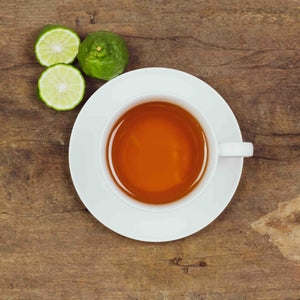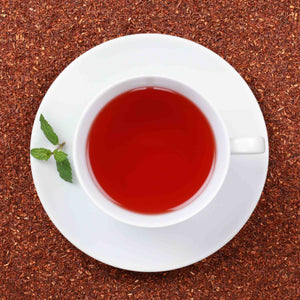Moroccan Tea Ceremony
Aug 17, 2020
Traditional Moroccan Art of Serving Tea
Imported from China in the 12th century, green tea is the favorite drink of Moroccans. Quickly adopted by all social classes, it is enjoyed on average five times a day - commonly called "Atay", the traditional tea ceremony.
Origins
In Islam, the concept of hospitality is triangular - it consists of God, the guest and the host.
For the guest, hospitality is a right rather than a gift,
For the host, hospitality is a duty towards God, then towards his guest.
The Moroccan tea ceremony includes four main principles:
- مرحبا (Marhaba) - Welcome
- Salam - Peace
- بركة (Barakah) - Blessing
- الحمد لله (Alhamdulillah) - Gratitude
Today, this same philosophy is still taught in schools. The Master of Ceremonies often has a multi-disciplinary background, in cultural, philosophical and scientific fields. In fact, teaching and practice is the experience of life, and the disciple always remains attentive to his Mâalam (Master).
Traditionally, men perform the tea ceremony more regularly than women, during major ceremonies.
Moroccan Mint Tea Ceremony Utensils
The Master of Ceremonies surrounds himself with the following objects:
|
In Arabic |
Transcription |
Meaning |
|
ابريق الشاي |
Abriq AlShay |
Teapot - often called Barad Atay in Moroccan |
|
كأس الشاي المغربي |
Kess Alshshay |
Tea glasses - often called Kess Atay in Moroccan |
|
صينية شاي مغربي |
Siniat AlShay |
Tea Tray - often called Siniat Atay in Moroccan |
|
علبة شاي |
Eulbat AlShay |
Tea box - often called Eulbat Atay in Moroccan |
|
علبة نعناع مغربية |
Eulbat Naanaa |
Mint box - often called Eulbat Nana in Moroccan |
|
علبة سكر مغربي |
Eulbat Sakar |
Sugar box - containing Moroccan sugar loaf |
|
swear صغيرة |
Malaeaqat Saghira |
Tea spoon used to transfer tea from the tea box to the teapot. |
|
طقم شاي مغربي منديل طرز الفيسي |
Taqum AlShay Mndil Tarz Alfisii |
Moroccan tray napkin set in "Terz el Fassi", containing a tray base, a teapot holder and cover and small napkins for guests |
|
غسل Amen |
Ghasil Alyadin |
Traditional Moroccan hand wash basin |
|
مرشة ماء and مغربي |
Marashat my warad |
Rose water sprinkler to perfume guests |
In its most traditional version, the highly codified protocol asks guests to bring gifts, depending on the circumstances and the means of each guest.
Moroccan tea room
As in the tales of the Thousand and One Nights, the Moroccan tea room is a farandole of floor mats and a multitude of cushions. A generous invitation to travel to the highest place of spirituality…
Comfort is an important element in the Moroccan tea room. Seats are often low to the ground, and sofas are very soft and plentiful. Tables are sometimes as low as the floor to accommodate the low seating. To capitalize on making the space as comfortable as possible, curtains and textiles are also very present. The floors are often covered with beautiful Berber rugs, with hand-woven throws and cushions.
A canopy over the lounge seats creates a warm Moroccan atmosphere. And the lighting brings more warmth, thanks to lamps, lanterns and artisanal sconces in copper or brass, finely chiseled with geometric shapes. On the walls are many mirrors decorated with mosaic tiles (Zelliges), in order to bring more light and the feeling of space.
Progress
There are several types of ceremonies depending on the mint tea (light, sweet, bitter, strong) served.
Below is a description of the most commonly encountered tea ceremony (the short version) where a green tea - Gunpowder - with fresh mint (naturally sweetened) is tasted:
- Purification - The Tea Master, dressed in traditional attire, begins by greeting (Salam Alaikum) his guests, then places the various kitchen utensils in their designated positions. Towels are used to clean the glasses (Kess) and the teapot (Barad). Then, the host pours hot water into the teapot to bring it to temperature, and rinses it before preparing the mint tea. The fresh mint has been washed in cool water and rinsed beforehand.
- Preparation - The Master places two spoons of green tea - Gunpowder in the teapot, which corresponds to about three grams. He adds the hot water and stirs the teapot in an elliptical rotation. The movement begins with a slight rotation in order to unify the beverage. Then, it is advisable to make a firm and rapid back and forth movement from top to bottom. This first beverage is poured into a glass, while waiting for the final preparation. The Master adds hot water to the teapot, and begins the rotating movements again to remove any impurities from the green tea. This new mixture is poured and then thrown away because it is very bitter and impure. The Host can then add a natural sweetener (gave syrup or organic stevia leaf powder), and fresh mint, and fill the teapot with hot water (about 90 ° C). The Master lets the mixture infuse in the teapot over a low heat for two minutes. Then, the Master pours the mixture into two tea glasses, and returns the mixture from the glasses to the teapot to continue the infusion while oxygenating the mint tea. This operation is repeated several times under the expert eye of the Master. When the foam appears more and more at the top of the glasses, all the aromas have merged for an excellent flavor of this first infusion.
- Tasting - Thus prepared, the tea can be served to the guests of honor, serving them from right to left. Before tasting, the guests must all be served a glass of mint tea. Then, each raises his glass as a sign of respect for the host and pronounces the expression "Bismil'Allah" (In the name of God). Drinking from the front side is an unforgivable error of etiquette. Mint tea is drunk in several small sips, without ever putting the glass back on the table. When all the guests' glasses are placed on the table, an assistant clears the tables and brings new glasses for a second and then the third and final tasting.
- Thanks - The host thanks all the guests for agreeing to share this mint tea. All the guests thank him in turn and make divine invocations to reward the Master of Ceremonies and his family for his generous hospitality.
In the long version, guests then taste Moroccan cuisine, often around a couscous or a tagine. Accompanied by mint tea, the experience ends with a selection of Moroccan pastries.
For the shorter version, only the selection of pastries is presented.
 Attend a ceremony
Attend a ceremony
At Maison NANA1807 , a tea ceremony lasts between one and four hours depending on the number of guests, the meal prepared and the type(s) of Mint tea served.To live this experience during a stay in Berry or Morocco, book on marhaba@nana1807.com
TASTE THE DIFFERENCE & SHARE THE EXPERIENCE OF THE BEST MINT TEA


 Attend a ceremony
Attend a ceremony




